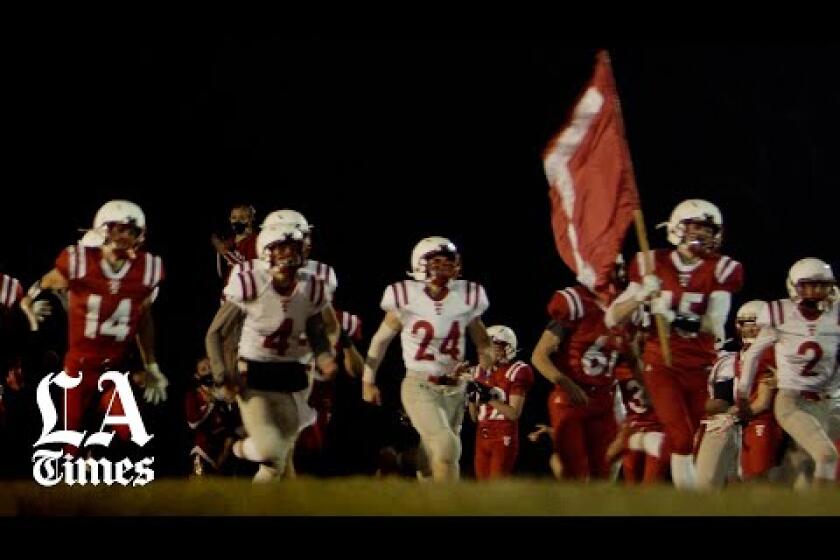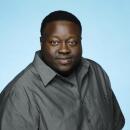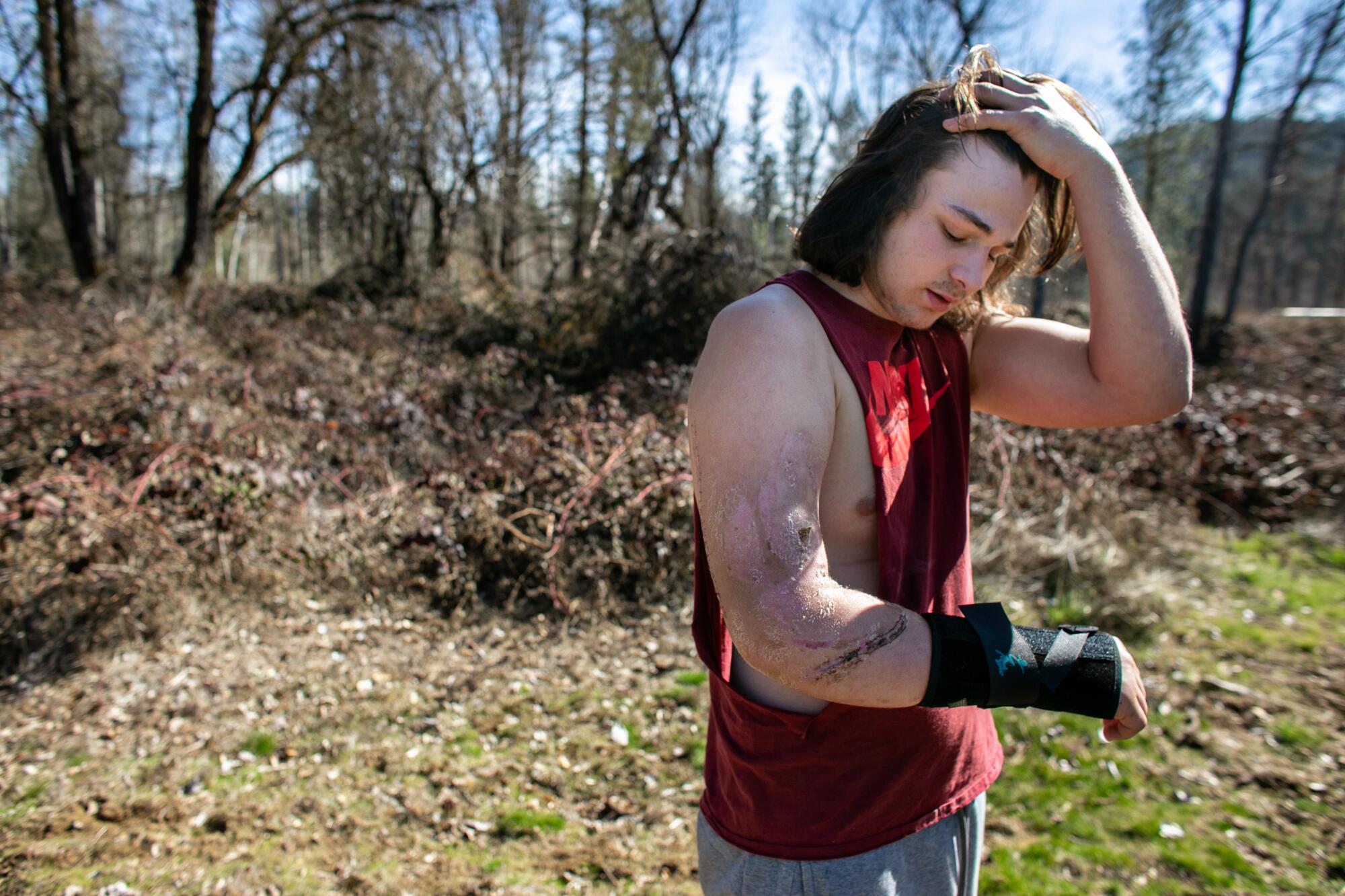
- Share via
WEAVERVILLE, Calif. — Chase Kirby’s friends kept texting, kept asking him to go.
It was early March, just days before the Trinity High School Wolves’ one and only football game of the season after the pandemic lockdown. But Chase, a strapping 6-foot, 210-pounder who had played defensive end and linebacker, wasn’t so sure he wanted to be there.
“They’re probably gonna feel bad for me or something,” he said. “I just don’t like that kind of vibe.”
For the 18-year-old Chase, football had felt like a ticket to a different life, a future beyond this remote town of 3,100 people deep in California’s northern forests. He planned to play football at a community college and hoped to get noticed by a bigger school.
But in early February, he rose before the sun for a 5 a.m. shift at the local sawmill, pulling and stacking freshly cut pieces of Douglas and white fir over and over again. It was hard, repetitive work. He liked it.
He was standing in front of a rotating conveyor belt when a few pieces of wood got stuck. He grabbed one just as the machine grabbed it, too. He didn’t have time to let go. In an instant, the machine had his arm and was yanking him forward.
He let out a scream.
::
Eleven months earlier, after the COVID-19 pandemic shut down in-person classes, Chase half-heartedly finished his junior year, then went to work for the summer, building a house, erecting fences, doing yardwork — the kind of physical labor that keeps him in shape.
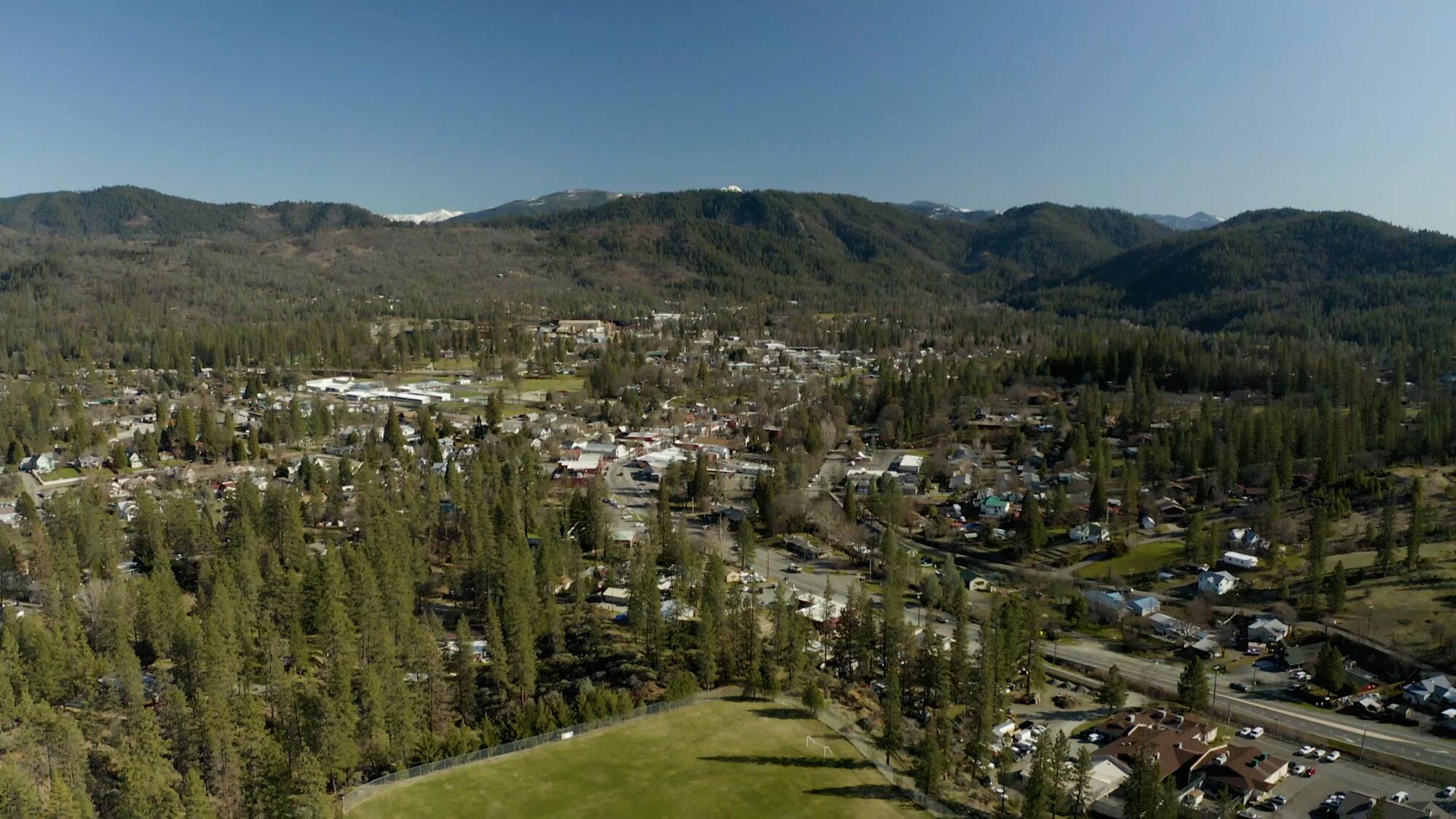
“It was either hang out with my friends or make money,” he said. “That’s basically what everybody did in this town. They decided to go just make some money because of COVID.”
Weaverville, an old Gold Rush town, sits beneath the snow-covered granite peaks of the Trinity Alps Wilderness, four hours north of San Francisco. The area is so synonymous with the forest that the Trinity County Board of Supervisors last year considered formally making it a crime to kill Bigfoot — whose legend draws tourists the region now depends upon.
It’s a beautiful land, where many people struggle. Before the pandemic, the poverty rate in Trinity County was nearly double the national average. The population is shrinking. And the economy is increasingly reliant not on logging or mining — occupations that have always had a certain mythos here — but upon marijuana cultivation.
The federal government owns more than 75% of the land in Trinity County, which tends to be a sore subject here. A once thriving lumber industry cratered in the early 1990s for a variety of reasons: recession, changing technology, timber-harvesting restrictions imposed on federal lands to protect the northern spotted owl.
A generation earlier, Trinity County had 28 sawmills. Now, the only one left is Trinity River Lumber Co., where Chase worked. The sawmill, which opened in 1947, is like so many here: a survivor.
In 2009, longtime resident Jim French was driving north of town when he saw a huge plume of smoke rising in the direction of the mill. A welder’s torch had sparked a blaze and the place burned to the ground. French pulled over to the side of the road and wept.
The retired superintendent of the Trinity Alps Unified School District said the mill paid for Weaverville students’ baseball and football uniforms. It gave scholarship money. It helped build the local performing arts center.
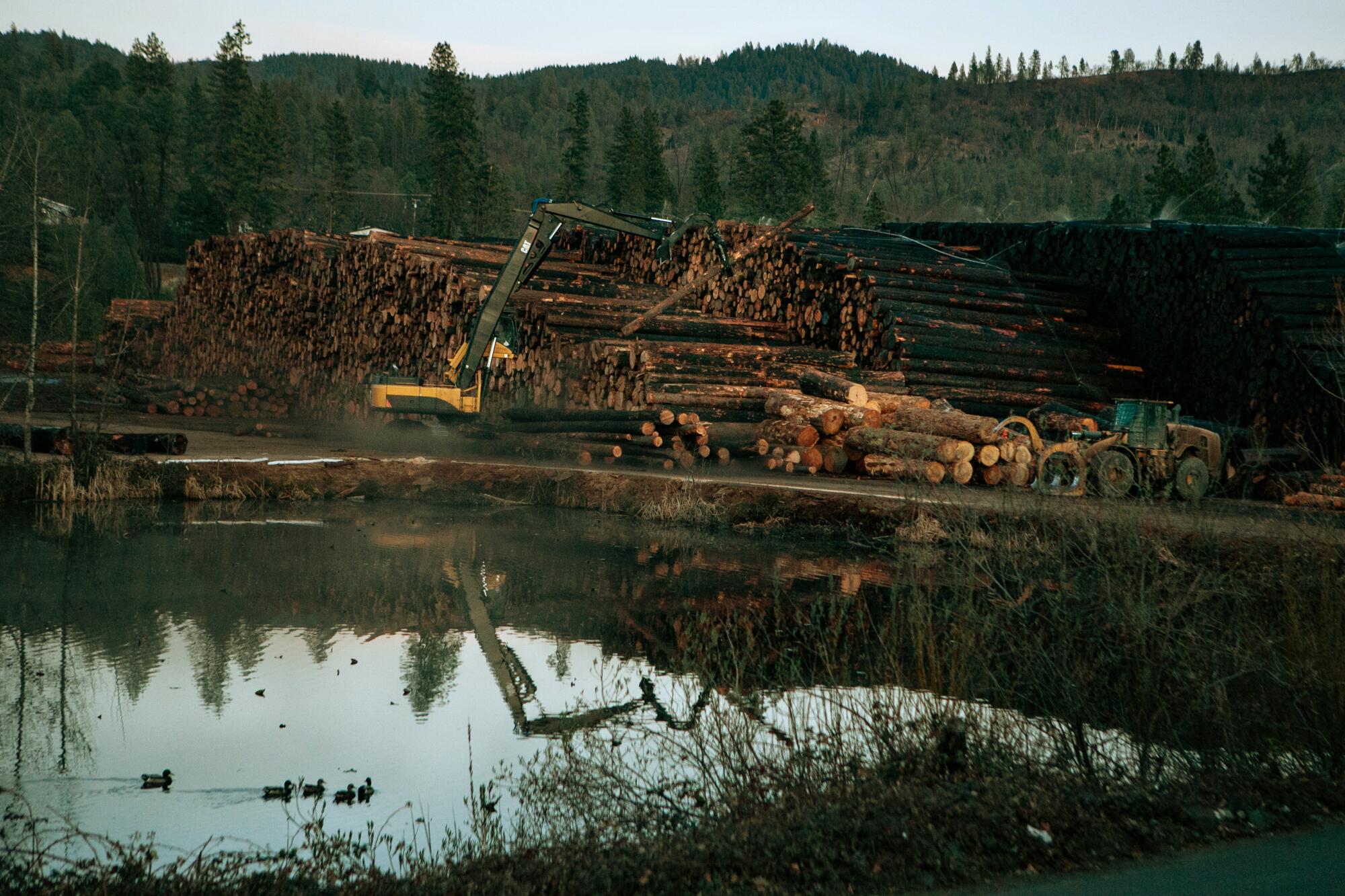
“Any time a kid needs something, you go to that mill,” French said, his voice cracking with emotion.
As for the fire, “it was like someone had poured gasoline on your freaking heart. But they rebuilt it. And they stayed. They could have easily walked away from us, but they have a heart for this place.”
A heart for this place. That seems to be how the town, and its school, endure.
In the summer of 2018, Chase’s campus sheltered refugees from the deadly Carr fire. The next summer, the county shut down Weaverville Elementary and Trinity High School after the discovery of toxic black mold; high schoolers are still learning in portable buildings, and the gym where Chase, who was also a varsity basketball player, once competed remains gutted.
Trinity High School students came back to their classrooms last August amid the pandemic, but Chase started his senior year at home, on independent study. His mom provides in-home care for older people; he didn’t want to risk passing the coronavirus on to her and then her clients.
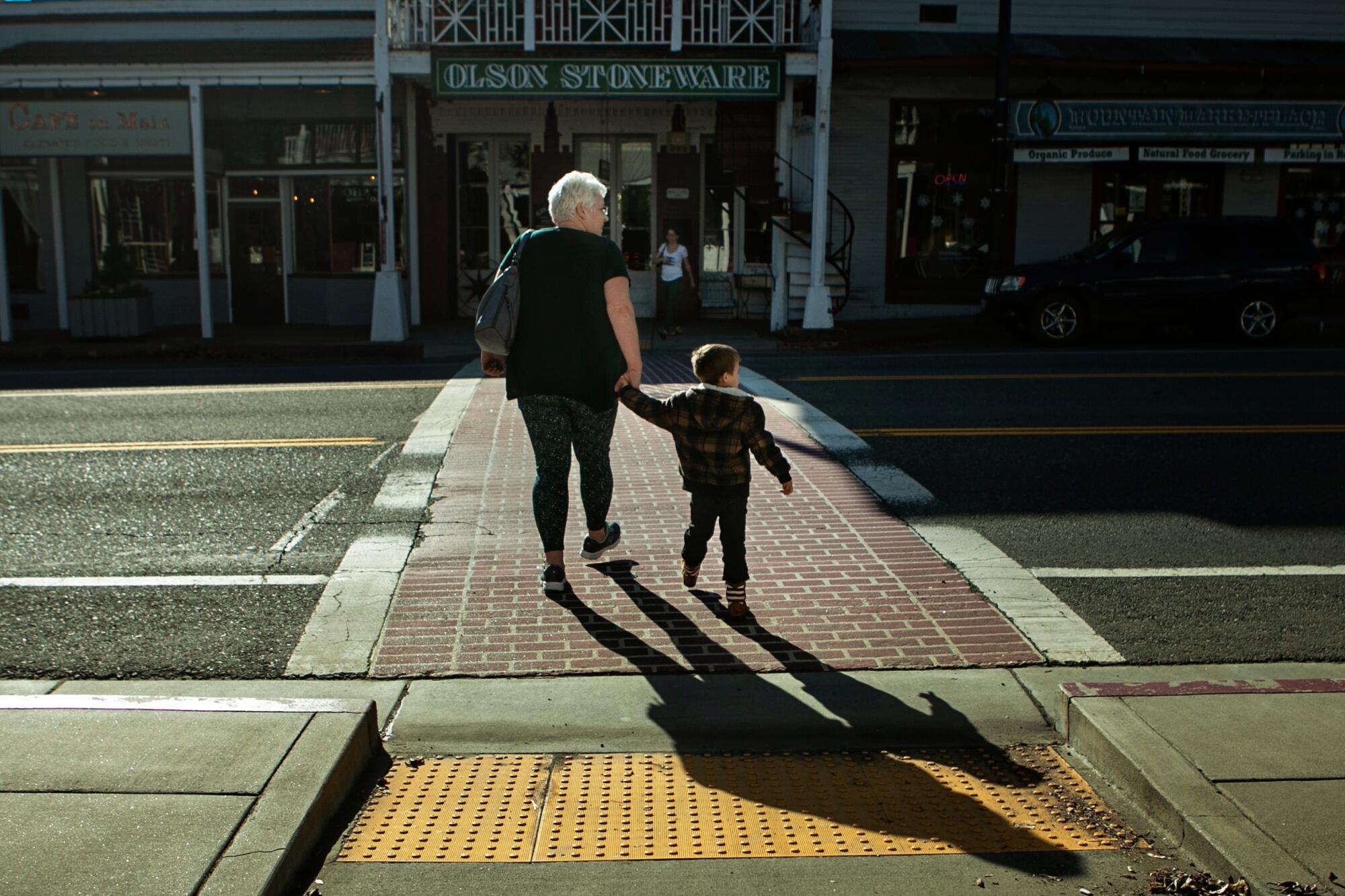
But he hated working, once again, on lessons handed out in paper packets. And he missed sports. He came back to class in September but struggled to catch up, especially in math.
Across California, youth sports did not come back. Football coaches in Weaverville had the boys lift weights a few times a week, just to give them something to do, said junior varsity coach Ryan Gogan.
Grades tanked. To be eligible to play, students must have at least a 2.0 GPA and not be flunking any classes.
“A lot of the guys, sports are the only thing that keep them focused on the classroom,” the coach said. “It’s been terrible academically for a lot of these students.”
Mike Garcia, Chase’s former defensive coach, said that, often, “these kids need football more than football needs them. To get that taken away from them? It’s hard to keep them motivated.”
“There’s a blue-collar mentality here,” added Garcia, who works as an electrical lineman for the Trinity Public Utility District. “Kids are athletes, and they go to work at the mill. They work with their hands ... When I watch these kids graduate, most want to get out of this small town and see what it’s like in a big city. You sit back, and after a couple years, a lot come back.”
In the 2019 season, the Wolves won one game and lost nine, and players and coaches had hoped 2020 would be their chance for a comeback. But the sports ban persisted, even as Chase’s coaches were “blowing up my phone” telling him to hold out hope they’d play again.
“They kept saying we’ll be back,” Chase said. “September came around, and they were like, it’s going to happen in September. It didn’t. Then October, I was like — OK. November?”
In mid-October, he turned 18 and made a decision: He quit school.
Sports are “basically the only reason I go to school other than my friends,” he said. “That’s the whole reason I dropped out.”
::
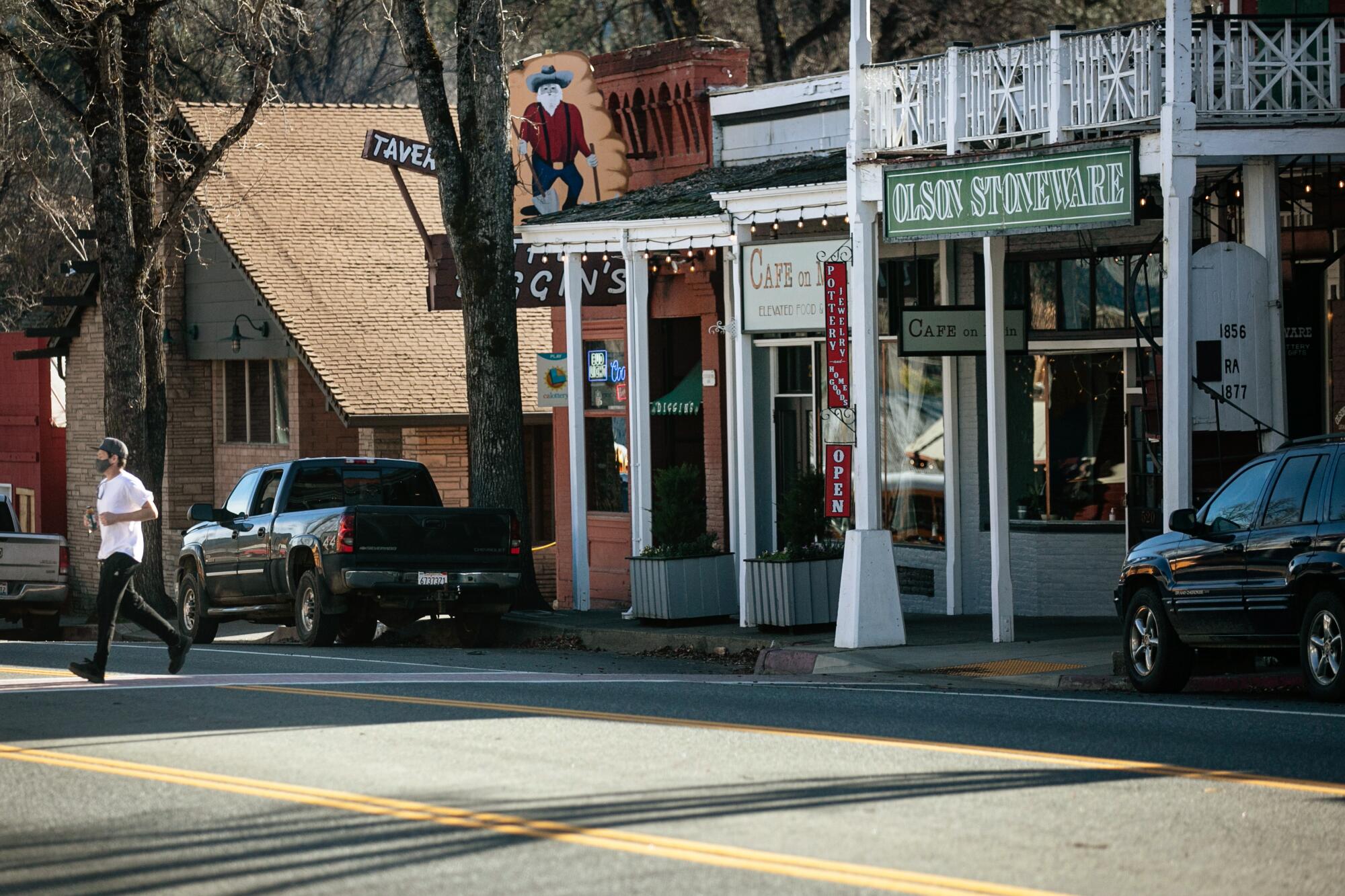
Chase started working at Burger King and planned to take his high school equivalency test in the spring. He would save up some money and hoped to attend Shasta College in Redding.
Then a job opened up where his father and older brother and so many others in town made their living: the lumber mill. He started work in January.
Chase was nearing the end of his shift on Feb. 11 when he tried to dislodge the wood stuck on the conveyor belt. He kept his hand away from the belt, but the machine pulled back hard when he grabbed one piece, ensnaring his fingers and tugging his arm in.
Chase grappled with it, jerking and tugging as if in a fight with the biggest, meanest offensive lineman he’d faced in his life.
“When it pulled me in,” he said, “I was like, ‘OK, I’m not gonna cry and die right here.’ ... I’m screaming for help, but at the same time, I was pulling back. I was fighting the machine the whole time.”
Other employees untangled Chase’s shredded, bloody arm. The equipment had yanked him all the way up to his right shoulder, tearing through his bicep, piercing his forearm, snapping his humerus bone. He thought his hand was disconnected.
It took 45 minutes, he said, for one of the county’s only ambulances to arrive from Hayfork — 30 winding, mountain-road miles south. Then another hour to drive east to Mercy Medical Center in Redding.
Dee Sanders, the general manager for Trinity River Lumber, said there had never been an accident in the area of the mill where Chase worked.
“It’s always difficult to see anyone who works for us get hurt,” he said. “We just pray he’s able to heal up and get back and live a normal life.”
There were two surgeries. Doctors had to clean sawdust from the wounds. They removed 60% of his bicep. They put a metal plate and a rod in his arm. Chase said he was intubated but woke up in a panic on the operating table, unable to open his eyes or move his body, feeling as if he was choking.
“I guess I started crying,” he said. “A tear shed, and they pulled the tube out of my throat. Then I don’t remember anything. I guess I just fell asleep.”
Twelve days later, football practice started again.
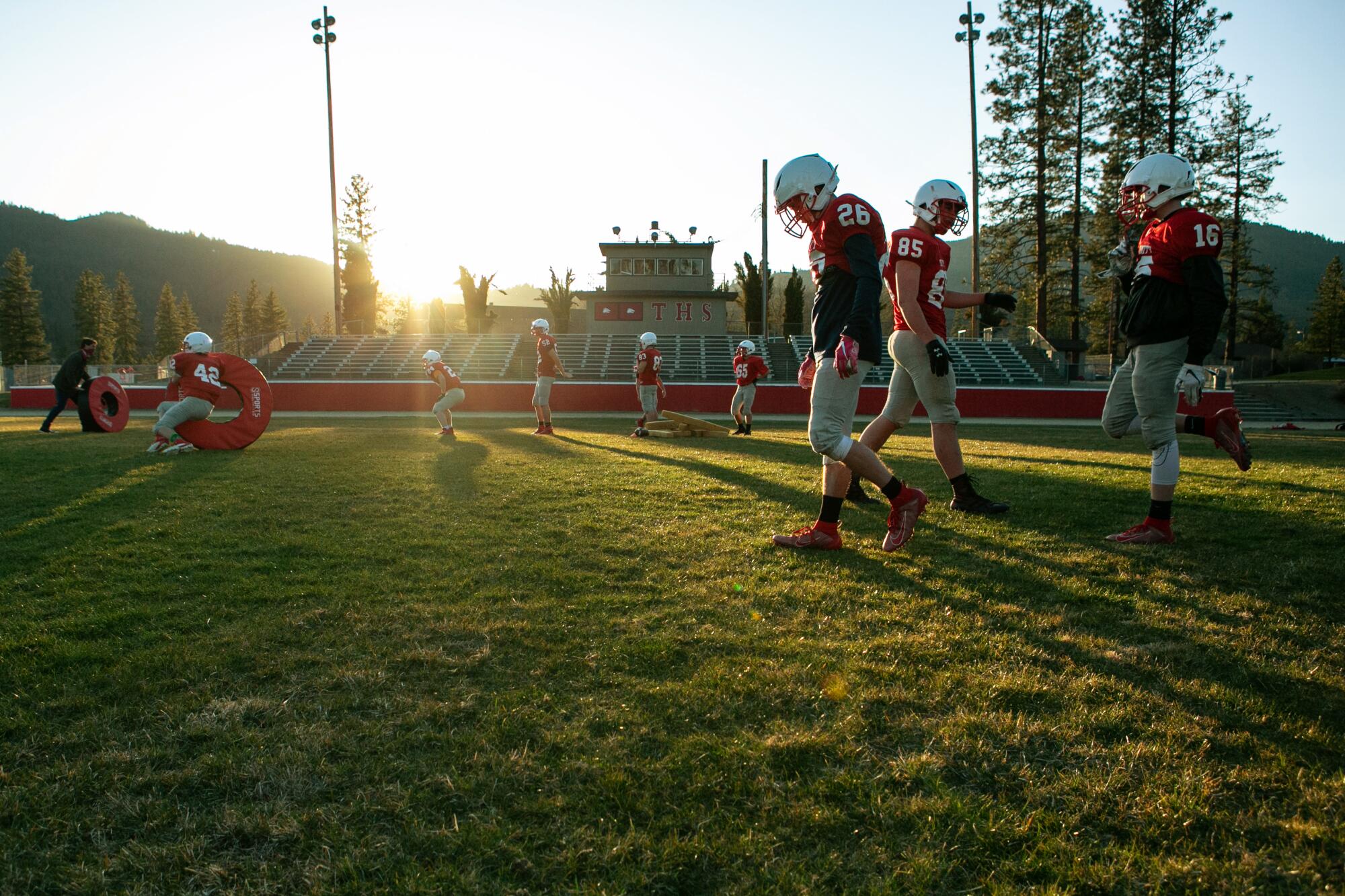
::
In March, with the coronavirus more in check, youth athletes were again allowed to compete in California. But the Trinity Wolves’ far-flung league, which includes schools three and four hours away, had canceled the season. So, they split their own team in half. They would play themselves and have a homecoming game.
Before the game, coach Scott Merryman said it would be bittersweet, playing again but without Chase.
Chase could be headstrong, and they didn’t always get along, Merryman said, but “if he knew he was right, he wasn’t afraid to let you know. And I had utmost respect for that. I miss that.”
He had learned of Chase’s accident from his daughter, who works at the mill. Merryman was empathetic. Just over a year earlier, he had his own lumber-related brush with death.
On Nov. 4, 2019, Merryman, a California Highway Patrol officer, was driving eastbound on Highway 299 when a speeding vehicle whipped past. Merryman started a U-turn to go after it.
A logging truck smashed into the driver’s side of his patrol car at 47 mph.

He had a traumatic brain injury, punctured a lung in three places, lacerated his liver, fractured his spine. But, in time, he returned to coaching.
During practice, Merryman bundled up in a thick sweatshirt because he now has four titanium ribs. The metal makes him cold.
Jim Pindell, the high school counselor, has a logging story to share, too.
When Pindell, 70, was in his 20s, he worked as a logger. A co-worker was clearing brush with a swing blade, and it slipped out of his hand. Pindell threw up his right hand as it flew toward him. The blade sliced halfway through it.
He nearly bled to death. The doctor told his mother: “You tell Jim to find a different line of work.”
To this day, he can’t fully move his fingers. He used to play saxophone, but no more.
Now, Pindell visits Chase every few days. “We share war stories,” he said. “I shared with him my own moving on with life, and he’s all about that.
“He’s a survivor, that one.”
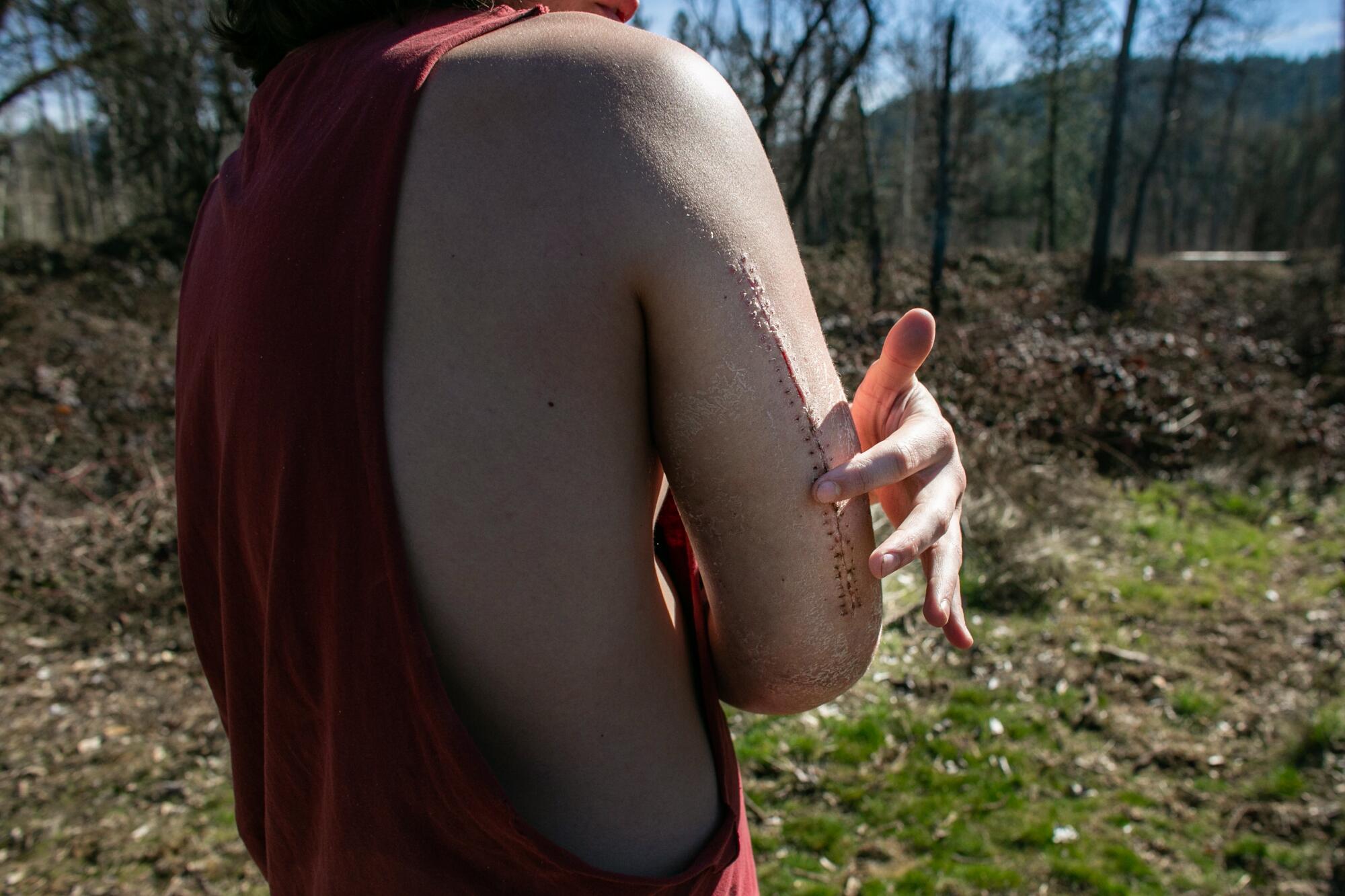
A few days before homecoming, Chase was sitting in his family’s wooded backyard off Mill Street, where blackberry vines grow wild.
His wrist was in a brace. The skin on his right arm was scabbed and pink. On the back of his arm, stitches ran from his armpit to his elbow. Little by little, he made progress in trying to ball his hand into a fist. Doctors told him that if he couldn’t do so in a month, he never would be able to again.
“I should have been dead,” he said. “I really should have. It should have pulled me in and snapped my neck or ripped my arm off or something. But I got really lucky.”
Now, with homecoming approaching, Chase wrestled with whether to show up.
“Every now and then I get a little emotional about it,” he said. “But I’m a really strong person. It’s just a weird feeling, because I like my body, obviously. I do stuff all the time, so not being in control of a certain part in my body just ... doesn’t feel right, you know?
“But I’m just keeping my head up ... I’m gonna do me and prove everybody wrong and try to get my full potential back in my arm and do what people don’t think I can.”
In May, he’ll take his high school equivalency test, he says. From there, he’s not sure what happens. He is considering trade school and would enjoy working in construction, but that depends on how his arm and hand heal.
On March 12, a 45-degree Friday night, the Trinity Wolves took the field for homecoming. Half wore red; the other, white. Teammates, and, for just one night, rivals.
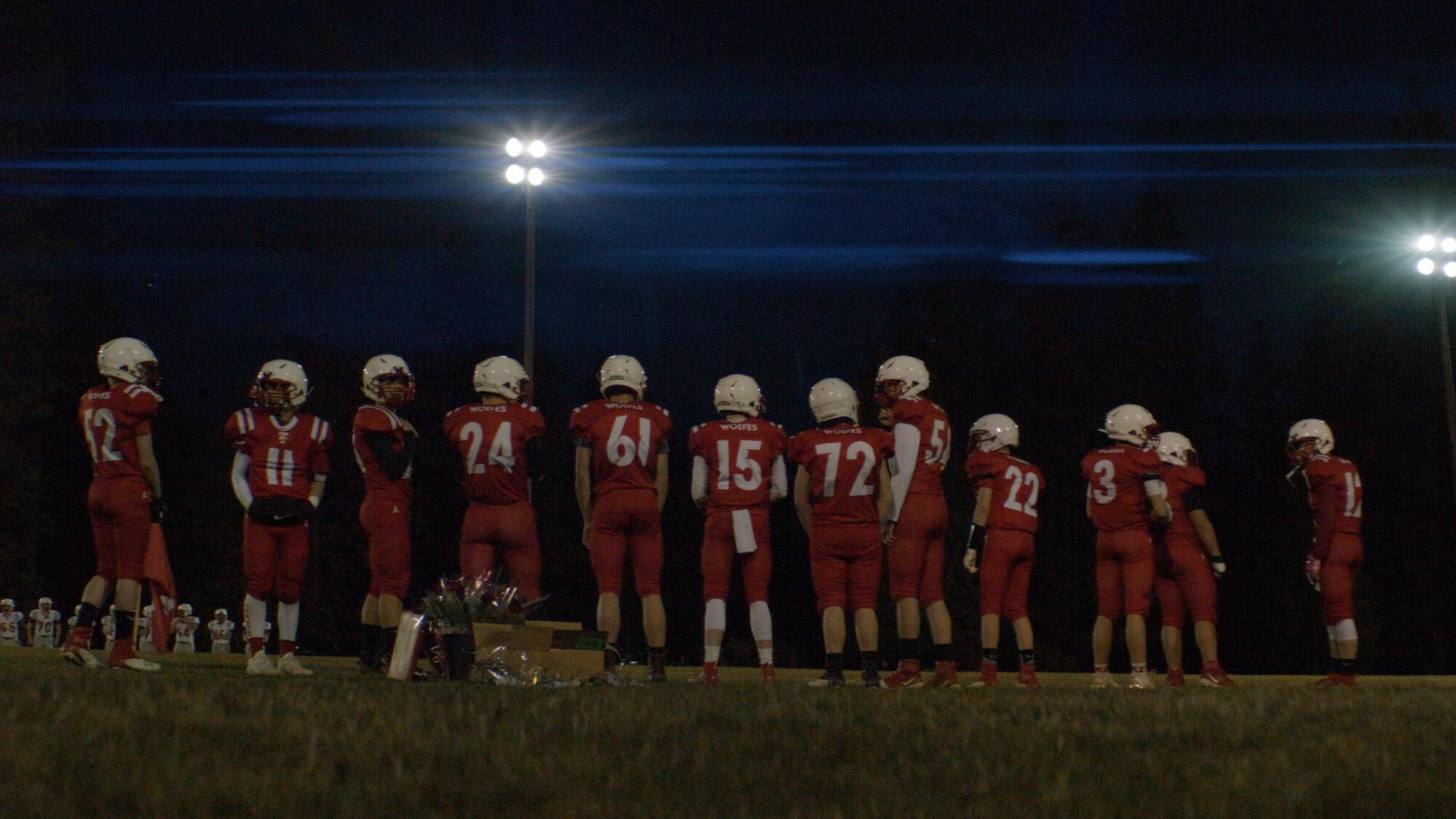
Families pulled up around the dirt track, sitting in lawn chairs on the beds of pickup trucks. It would usually be standing-room-only in the bleachers, but capacity was limited by social distancing. That didn’t matter, though, to the overjoyed crowd.
“We’re just trying to enjoy every moment today because they can see how quickly things can be taken from them,” said Heidi Rupp, who has two sons on the team. “I’m going to cheer as loud as I possibly can to make up for the 10 games I should have been cheering for. I’m here to embarrass my boys as much as I can.”
Fans screamed as the senior cheerleaders and football players were honored, walking with their families to the center of the field. The homecoming royalty rode around the track in vintage cars. A king and queen were crowned.
Chase and his girlfriend slipped into the stands, practically unnoticed, just after the national anthem. They took a seat by themselves at the far end of the bleachers.
But as the red team quarterback threw a touchdown pass for a come-from-behind victory, they sat next to friends. Chase clapped his good hand on the side of his leg, cheering.
The football season for a rural California high school was canceled because of the coronavirus pandemic, but the town needed a homecoming to heal.
More to Read
Sign up for Essential California
The most important California stories and recommendations in your inbox every morning.
You may occasionally receive promotional content from the Los Angeles Times.
